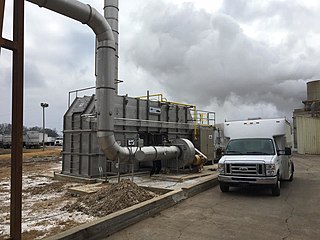 W
WPollution is the introduction of contaminants into the natural environment that cause adverse change. Pollution can take the form of chemical substances or energy, such as noise, heat, or light. Pollutants, the components of pollution, can be either foreign substances/energies or naturally occurring contaminants. Pollution is often classed as point source or nonpoint source pollution. In 2015, pollution killed 9 million people worldwide.
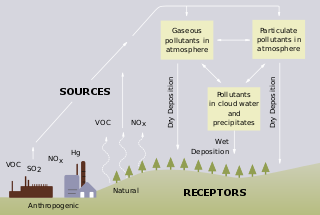 W
WAcid rain is a rain or any other form of precipitation that is unusually acidic, meaning that it has elevated levels of hydrogen ions. It can have harmful effects on plants, aquatic animals, and infrastructure. Acid rain is caused by emissions of sulfur dioxide and nitrogen oxide, which react with the water molecules in the atmosphere to produce acids. Some governments have made efforts since the 1970s to reduce the release of sulfur dioxide and nitrogen oxide into the atmosphere with positive results. Nitrogen oxides can also be produced naturally by lightning strikes, and sulfur dioxide is produced by volcanic eruptions. Acid rain has been shown to have adverse impacts on forests, freshwaters, and soils, killing insect and aquatic life-forms, causing paint to peel, corrosion of steel structures such as bridges, and weathering of stone buildings and statues as well as having impacts on human health.
 W
WAsbestosis is long term inflammation and scarring of the lungs due to asbestos fibers. Symptoms may include shortness of breath, cough, wheezing, and chest tightness. Complications may include lung cancer, mesothelioma, and pulmonary heart disease.
 W
WBiofouling or biological fouling is the accumulation of microorganisms, plants, algae, or small animals on wetted surfaces that have a mechanical function, causing structural or other functional deficiencies. Such accumulation is referred to as epibiosis when the host surface is another organism and the relationship is not parasitic.
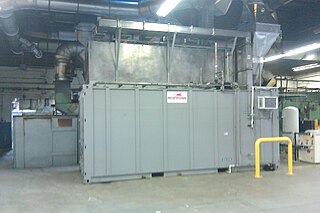 W
WA biological oxidizer is a device that uses micro-organisms to treat wastewater and the volatile organic compounds produced by commercial and industrial operations. Biological oxidation devices convert biodegradable organic compounds into carbon dioxide and water. This is a natural occurring process which differs from traditional chemical and thermal oxidizing agents and methods. Some of the more commonly used micro-organisms are heterotrophic bacteria, which play an important role in biological degradation processes. Generally, these micro-organisms are rod shaped and facultative. Biological oxidizers provide a stable environment which allows bacteria to naturally oxidize and stabilize a large number of organics in a more efficient manner. Some of the emissions that may be treated biologically include:heterocyclic compounds ; polyaromatic hydrocarbons (PAHs); pharmaceutical substances; polychlorinated biphenyls; hydrocarbons (oil); benzene, toluene, ethylbenzene, and xylene (BETEX); methyl ethyl ketone (MEK); some metals.
 W
WBiomagnification, also known as bioamplification or biological magnification, is any concentration of a toxin, such as pesticides, in the tissues of tolerant organisms at successively higher levels in a food chain. This increase can occur as a result of:Persistence – where the substance cannot be broken down by environmental processes Food chain energetics – where the substance's concentration increases progressively as it moves up a food chain Low or non-existent rate of internal degradation or excretion of the substance – mainly due to water-insolubility
 W
WA disposable is a product designed for a single use after which it is recycled or is disposed as solid waste. The term is also sometimes used for products that may last several months to distinguish from similar products that last indefinitely. The word "disposables" is not to be confused with the word "consumables", which is widely used in the mechanical world. For example, welders consider welding rods, tips, nozzles, gas, etc. to be "consumables", as they last only a certain amount of time before needing to be replaced. Consumables are needed for a process to take place, such as inks for printing and welding rods for welding, while disposable products are products that can be thrown away after it becomes damaged or otherwise unuseful.
 W
WThe environmental impact of paint can vary depending on the type of paint used and mitigation measures. Traditional painting materials and processes can have harmful effects on the environment, including those from the use of lead and other additives. Measures can be taken to reduce environmental impact, including accurately estimating paint quantities so waste is minimized, and use of environmentally preferred paints, coating, painting accessories, and techniques.
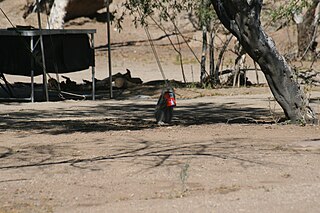 W
WThe environmental effect of pharmaceuticals and personal care products (PPCPs) is currently being widely investigated. PPCPs include substances used by individuals for personal health or cosmetic reasons and the products used by agribusiness to boost growth or health of livestock. More than twenty million tons of PPCPs are produced every year.
 W
WThe Industrial Emissions Directive (Directive 2010/75/EU of the European Parliament and of the Council of 24 November 2010 on industrial emissions is a European Union directive which commits European Union member states to control and reduce the impact of industrial emissions on the environment.The directive aims to lower emissions from industrial production through an integrated approach. The directive uses a polluter pays to assign the cost of the updates to the plant. The plan to lower emissions is based on Best available technology to help reach the goals of the directive. The plan allows for flexibility given the best available technology; exemptions to the directive can be granted to firms as well if the cost is greater than the benefit.
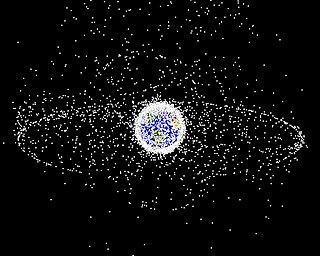 W
WThe Kessler syndrome, proposed by NASA scientist Donald J. Kessler in 1978, is a theoretical scenario in which the density of objects in low Earth orbit (LEO) due to space pollution is high enough that collisions between objects could cause a cascade in which each collision generates space debris that increases the likelihood of further collisions. One implication is that the distribution of debris in orbit could render space activities and the use of satellites in specific orbital ranges difficult for many generations.
 W
WKids Ocean Day HK was organised by Ocean Recovery Alliance to celebrate Kids Ocean Day in Hong Kong.
 W
WLight pollution is the presence of anthropogenic and artificial light in the night environment. It is exacerbated by excessive, misdirected or obtrusive use of light, but even carefully used light fundamentally alters natural conditions. As a major side-effect of urbanization, it is blamed for compromising health, disrupting ecosystems and spoiling aesthetic environments.
 W
WNoise pollution, also known as environmental noise or sound pollution, is the propagation of noise with ranging impacts on the activity of human or animal life, most of them harmful to a degree. The source of outdoor noise worldwide is mainly caused by machines, transport, and propagation systems. Poor urban planning may give rise to noise disintegration or pollution, side-by-side industrial and residential buildings can result in noise pollution in the residential areas. Some of the main sources of noise in residential areas include loud music, transportation, lawn care maintenance, construction, electrical generators, explosions, and people.
 W
WPea soup fog is a very thick and often yellowish, greenish or blackish fog caused by air pollution that contains soot particulates and the poisonous gas sulphur dioxide. This very thick smog occurs in cities and is derived from the smoke given off by the burning of soft coal for home heating and in industrial processes. Smog of this intensity is often lethal to vulnerable people such as the elderly, the very young and those with respiratory problems. The result of these phenomena was commonly known as a London particular or London fog; in a reversal of the idiom, "London particular" became the name for a thick pea and ham soup.
 W
WPlastic pollution is the accumulation of plastic objects and particles in the Earth's environment that adversely affects wildlife, wildlife habitat, and humans. Plastics that act as pollutants are categorized into micro-, meso-, or macro debris, based on size. Plastics are inexpensive and durable, and as a result levels of plastic production by humans are high. However, the chemical structure of most plastics renders them resistant to many natural processes of degradation and as a result they are slow to degrade. Together, these two factors have led to a high prominence of plastic pollution in the environment.
 W
WA plasticrust is a type of plastic pollution. Plasticrusts consist of plastic debris encrusting rocky surfaces and have been described, for the first time, in Madeira Island in 2019. More recently, plasticrusts were detected in Giglio Island. In Madeira and Giglio, plasticrusts occurred in wave-exposed rocky intertidal habitats that directly face the open sea. Hence, plasticrusts are presumably created by sea waves smashing marine plastic debris against rugose rocks. The Madeira and Giglio plasticrusts consisted of Polyethylene (PE) as verified by Fourier-transform infrared spectroscopy.
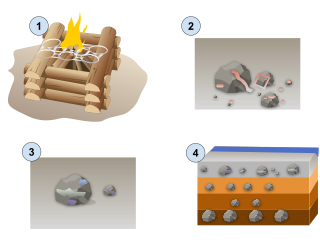 W
WPlastiglomerate is a term that was proposed by Patricia Corcoran, Charles J. Moore and Kelly Jazvac for a stone that contains mixtures of sedimentary grains, and other natural debris that is held together by hardened molten plastic. It has been considered a potential marker of the Anthropocene, an informal epoch of the Quaternary proposed by some social scientists, environmentalists, and geologists.
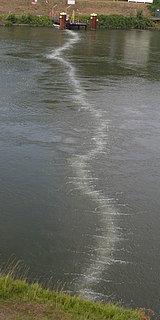 W
WA pneumatic barrier is a method to contain oil spills. It is also called a bubble curtain. Air bubbling through a perforated pipe causes an upward water flow that slows the spread of oil. It can also be used to stop fish from entering polluted water. A further application of the pneumatic barrier is to decrease the salt-water exchange in navigation locks and prevent salt intrusion in rivers. . Pneumatic barriers are also known as air curtains. The pneumatic barrier is a (non-patented) invention of the Dutch engineer Johan van Veen from around 1940 .
 W
WA point source of pollution is a single identifiable source of air, water, thermal, noise or light pollution. A point source has negligible extent, distinguishing it from other pollution source geometries. The sources are called point sources because in mathematical modeling, they can be approximated as a mathematical point to simplify analysis. Pollution point sources are identical to other physics, engineering, optics, and chemistry point sources and include:Air pollution from an industrial source Water pollution from factories, power plants, municipal sewage treatment plants and some farms. The U.S. Clean Water Act also defines municipal separate storm sewer systems and industrial stormwater discharges as point sources. Noise pollution from a jet engine Disruptive seismic vibration from a localized seismic study Light pollution from an intrusive street light Radio emissions from an interference-producing electrical device
 W
WIn environmental law, the polluter pays principle is enacted to make the party responsible for producing pollution responsible for paying for the damage done to the natural environment. It is regarded as a regional custom because of the strong support it has received in most Organisation for Economic Co-operation and Development (OECD) and European Union countries. It is a fundamental principle in US environmental law.
 W
WRadioactive contamination, also called radiological contamination, is the deposition of, or presence of radioactive substances on surfaces or within solids, liquids or gases, where their presence is unintended or undesirable.
 W
WA regenerative thermal oxidizer (RTO) is a piece of industrial equipment used for the treatment of exhaust air. The system is a type of thermal oxidizer that uses a bed of ceramic material to absorb heat from the exhaust gas. It then uses this captured heat to preheat the incoming process gas stream and destroy air pollutants emitted from process exhaust streams at temperatures ranging from 815 °C to 980 °C
 W
WSoil contamination or soil pollution as part of land degradation is caused by the presence of xenobiotics (human-made) chemicals or other alteration in the natural soil environment. It is typically caused by industrial activity, agricultural chemicals or improper disposal of waste. The most common chemicals involved are petroleum hydrocarbons, polynuclear aromatic hydrocarbons, solvents, pesticides, lead, and other heavy metals. Contamination is correlated with the degree of industrialization and intensity of chemical substance. The concern over soil contamination stems primarily from health risks, from direct contact with the contaminated soil, vapours from the contaminants, or from secondary contamination of water supplies within and underlying the soil. Mapping of contaminated soil sites and the resulting cleanups are time-consuming and expensive tasks, requiring extensive amounts of geology, hydrology, chemistry, computer modeling skills, and GIS in Environmental Contamination, as well as an appreciation of the history of industrial chemistry.
 W
WSpace debris is a term for defunct human-made objects in space—principally in Earth orbit—which no longer serve a useful function. These include derelict spacecraft—nonfunctional spacecraft and abandoned launch vehicle stages—mission-related debris, and particularly numerous in Earth orbit, fragmentation debris from the breakup of derelict rocket bodies and spacecraft. In addition to derelict human-built objects left in orbit, other examples of space debris include fragments from their disintegration, erosion and collisions, or even paint flecks, solidified liquids expelled from spacecraft, and unburned particles from solid rocket motors. Space debris represents a risk to spacecraft.
 W
WThermal pollution, sometimes called "thermal enrichment," is the degradation of water quality by any process that changes ambient water temperature. A common cause of thermal pollution is the use of water as a coolant by power plants and industrial manufacturers. When water used as a coolant is returned to the natural environment at a higher temperature, the sudden change in temperature decreases oxygen supply and affects ecosystem composition. Fish and other organisms adapted to particular temperature range can be killed by an abrupt change in water temperature known as "thermal shock."
 W
WToxic waste is any unwanted material in all forms that can cause harm. Many of today's household products such as televisions, computers and phones contain toxic chemicals that can pollute the air and contaminate soil and water. Disposing of such waste is a major public health issue.
 W
WVisual pollution is an aesthetic issue and refers to the impacts of pollution that impair one's ability to enjoy a pleasant view. Visual pollution disturbs the visual areas of people by creating harmful changes in the natural environment. Billboards, open storage of trash, antennas, electric wires, buildings, and automobiles are often considered visual pollution.